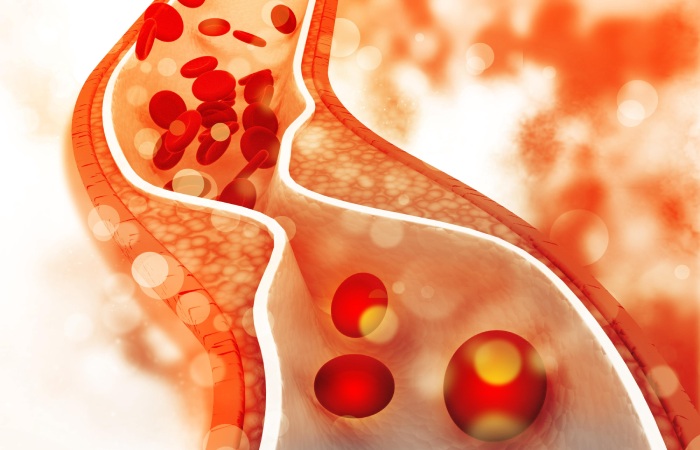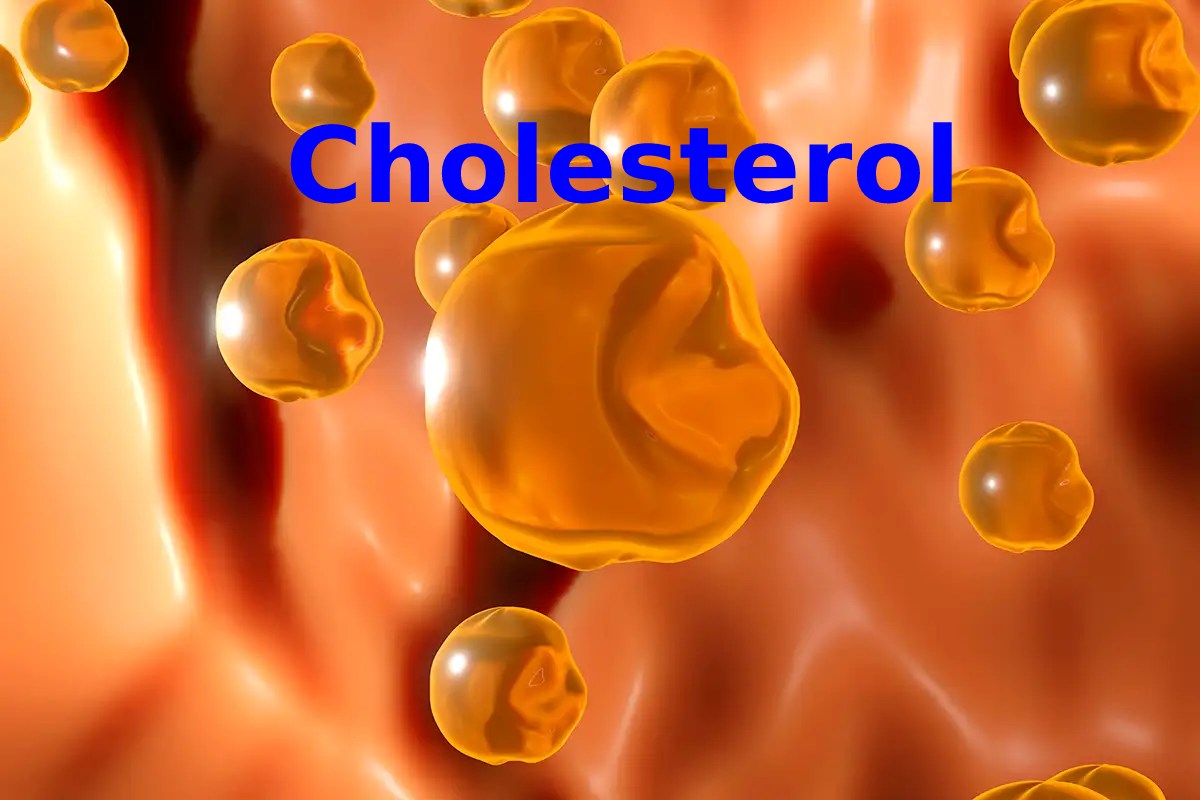Table of Contents
Introduction
Cholesterol is a fatty substance produced by our body and found in food. It is an essential element for the synthesis of many hormones and the membrane structure that surrounds the cells. After several years of too-high levels, Cholesterol regularly causes a loss of elasticity in the arteries and decreases their diameter. Excess Cholesterol is not a disease in this one but a risk factor for other diseases of the heart and blood vessels. It is called atherosclerosis (or arteriosclerosis), a disease that can have severe consequences—treating excess Cholesterol based on dietary measures and specific medications.
An unhealthy lifestyle is the most common cause of high “bad” LDL or low “good” HDL cholesterol—unhealthy intake habits, such as eating a lot of unhealthy fats. One type is found in some meats, saturated fat, baked goods, dairy products, chocolate, and processed and fried foods. However, genes inherited from parents, other medical conditions, and some medications can also raise LDL cholesterol levels or lower “good” HDL cholesterol levels.
Many health problems that increase the risk of high blood cholesterol are due to un healthy lifestyle habits. For example, lack of physical activity and poor eating habits can lead to overweight and obesity, leading to diabetes and sleep apnea. For people with diseases like lupus and HIV, the disease and the drugs used to treat it can cause unhealthy cholesterol levels.
What causes high Cholesterol?

A large number of factors can contribute to an increase in the concentration of LDL cholesterol in the blood:
- heredity;
- a diet that is too high in animal fats and Cholesterol;
- overweight and obesity;
- insufficient physical activity;
- gender (men have higher LDL cholesterol ).
Other disorders, for example, diabetes, hypothyroidism, liver and kidney disease, can raise LDL cholesterol blood levels.
What are the complications of High Cholesterol?
The symbols of atherosclerosis are different depending on the affected organs. They occur when it deposits diminish blood flow and prevent proper organ function. Suppose the arteries of the heart are concerned. In that case, the patient may develop attacks of angina pectoris (a contraction of the arteries which irrigate the heart muscle) or even myocardial infarction (the death of a part of the heart muscle due to lack of oxygenation). Plaques in the arteries located in the abdomen can cause erectile dysfunction. If the brain’s arteries by atheroma plaques, paralysis, vertigo, language disorders, etc., are possible. Now and then, pieces of plaque break off, migrate and clog a small downstream vessel. It is one of the causes of strokes (“brain attacks”).
Lastly, if the arteries of the legs narrow, intermittent calf cramps observe during walking: this is arteritis of the legs. This disease is more critical as the cramps and pain occur after a very short distance. That is because they are travelled or that they appear at rest. Severe arthritis of the legs can cause gangrene (the death of areas that are no longer irrigated), requiring amputation. Ultrasound makes it possible to assess the decrease in blood flow in the artery and diagnose arteritis.
What are cardiovascular risk factors?
Experts have identified a series of factors that promote the development of heart or vessel disease. These factors are taken into account to determine the desirable LDL cholesterol level.
Age: over 50 for a man or over 60 for a woman.
Family history of early heart disease (infarction): the risk existed when the patient’s father had a heart attack before age 55 (or the mother before age 65).
Tobacco use or its cessation for less than three years.
High blood pressure, even treated.
Type 2 diabetes.
A blood level of HDL cholesterol below 0.40 g/l (a level above 0.60 g/l cancels out a risk factor).
We also distinguish between so-called “high cardiovascular risk” patients: those who have a personal history of cardiovascular disease (heart attack, angina pectoris, arthritis, stroke ), and those who have type 2 diabetes with kidney or kidney disease—two other cardiovascular risk factors.
Understanding Blood Cholesterol Levels

How do you detect excess Cholesterol?
The detection of excess done by a blood test (carried out on an empty stomach), which evaluates LDL, HDL, and total levels, along with triglycerides. Since the age of 50, a systematic cholesterol assay carried out every five years for women and every three years for men. This dosage may be more frequent in patients with multiple cardiovascular risk factors. When a blood test shows ideals that are too high, the doctor has a second fasting blood test done to check the results of the first.
Atherosclerosis can notice during a medical examination by auscultating the neck, groin or abdomen. The doctor looks for a breath sound reflecting the narrowing of the arteries. Taking the pulse also makes it possible to assess the importance of reducing blood flow.
How to read blood test results?
The analysis laboratory measures the parameters that make up the patient’s lipid profile from a blood sample.
Total Cholesterol
Total Cholesterol includes HDL and LDL levels and one-fifth of triglyceride levels. This rate is usually less than 2 g/l.
Ldl Cholesterol
The vast majority of total Cholesterol is made up of LDL in the blood. Therefore, they are also called bad Cholesterol. In a patient, the doctor determines the desirable LDL level based on cardiovascular risk factors. In the absence of a risk factor, an LDL level considers normal when it is below 1.6 g/l. If the patient has one or more risk factors (for example, a man over 50), this limit value is 1.3 g/l. Beyond that, we must take therapeutic measures.
Hdl Cholesterol
Medical. Also called good Cholesterol, its role is to capture excess in the blood and take it to the liver to eliminate the bile. The HDL cholesterol level considers too low when it is below 0.35 g/l. A high HDL cholesterol level (more than 0.60 g/l) protects against cardiovascular disease and cancels out a cardiovascular risk factor. Thus, a 50-year-old man (a risk factor) who has an LDL level of 1.5 g/l and an HDL evel of 0.65 g/l will not remain considered as requiring treatment.
Triglycerides
Triglycerides make up most of the blood fats not found as Cholesterol. The level of triglycerides increases after a rich and well-watered meal, during liver disease or after taking certain medications. However, the link between a high level of triglycerides (more than 1.5 g/l) and cardiovascular disease risk has not established.
The Tc/Hdl Ratio
By dividing the total cholesterol level (TC) by the HDL level, we obtain the CT/HDL ratio, which makes it possible to assess the risk of cardiovascular disease. Unfortunately, this ratio is less used today.

